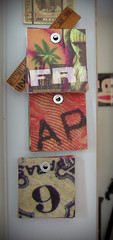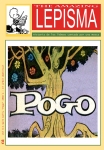| A brilliant Perseid Meteor Fireball pierces the night sky just below the North Star over the dark desert skies of Joshua Tree National Park, California. Photo by Wally Pacholka of Long Beach using standard 35mm Minolta camera on tripod with 50mm lens at f/2.4 and Fuji 800 film for 10 minutes. |  Perseids 99 Originally uploaded by H. Michael karshis. |
Sunday, August 01, 2004
Perseids 99
Heads Up! The Perseid Meteor Shower is Coming!
The 2004 Perseid Meteor Shower
The annual Perseid meteor shower is coming, and forecasters say it could be unusually good.
Meteoroids in space since the Civil War will spice up this summer's Perseid meteor shower.
The shower begins, gently, in mid-July when Earth enters the outskirts of a cloud of debris from Comet Swift-Tuttle. Dust-sized meteoroids hitting the atmosphere will streak across the night sky, at first only a sprinkling, just a few each night, but the rate will build.
By August 12th when the shower peaks, sky watchers can expect to see dozens, possibly even hundreds, of meteors per hour.
This is a good year for Perseids, for two reasons, explains Bill Cooke of the NASA Marshall Space Flight Center. First, the Moon is new in mid-August; moonlight won't spoil the show. Second, in addition to the usual shower on August 12th, there might be an extra surge of meteors on August 11th caused by a filament of dust newly drifting across Earth's orbit.
The filament, like all the rest of the dust in the Perseid cloud, comes from Comet Swift-Tuttle. The difference is, the filament is relatively young. It boiled off the comet during the Civil War, in 1862. Other dust in the cloud is older (perhaps thousands of years old), more dispersed, and responsible for the month-long shower that peaks on August 12th. The filament will eventually disperse, too, but for now it retains some of its original ribbon-shape.
If predictions are correct, Earth will plow through the filament on Wednesday, August 11th at 2100 UT (5 p.m. EDT). This will produce a surge of mostly-faint meteors over Europe and Asia. Observers might see "as many as 200 meteors per hour," says Cooke, who recommends getting away from city lights to watch the flurry.
(Note: Perseids favor northern latitudes. Because of the way Comet Swift-Tuttle's orbit is tilted, its dust falls on Earth's northern hemisphere. Meteors stream out of the constellation Perseus, which is barely visible south of the equator.)
Later that night, observers in North America can see the "traditional Perseid peak" caused by the older dust from Swift-Tuttle. "Expect 40 to 60 meteors per hour, some of them bright," says Cooke.
The best time to look for these "traditional Perseids" is during the hours before dawn on Thursday, August 12th. Set your alarm for 2 o'clock in the morning; go outside; lie down on a sleeping bag with your toes pointed northeast. You'll soon see meteors racing along the Milky Way.
Can't wake up at 2 a.m.?
Try looking around 9 or 10 p.m. on Wednesday, Aug. 11th when Perseus is hanging low in the eastern sky. You won't see many meteors then, but the ones you do see could be memorable. Shooting stars that emerge from the horizon and streak horizontally through the atmosphere are called "Earthgrazers." Slow and colorful Earthgrazers are a good target for city dwellers, because they are so bright.
Dust from Comet Swift-Tuttle hits Earth. What about the comet itself?
Americans Lewis Swift and Horace Tuttle, working independently, discovered the comet in 1862, and they watched the Aug. 11th filament billow into space. Three years later Giovanni Schiaparelli (of Martian "canali" fame) realized it was the source of the Perseid meteors. He understood that the comet could come close to Earth, but in those days no one worried about such things.
The idea that comets and asteroids might threaten our planet was not widely accepted until the 1980s. Then astronomers began to worry. Comet Swift-Tuttle is big, about the same size as the asteroid that wiped out dinosaurs 65 million years ago, and as recently as 1992 it seemed that Swift-Tuttle might strike Earth in the year 2126. New data and calculations show otherwise, though. There's no danger of a collision for at least a millennium and probably much longer.
So relax. Enjoy the show. Perseids are harmless … and beautiful. This is an unusually good year to see for yourself.
The annual Perseid meteor shower is coming, and forecasters say it could be unusually good.
Meteoroids in space since the Civil War will spice up this summer's Perseid meteor shower.
The shower begins, gently, in mid-July when Earth enters the outskirts of a cloud of debris from Comet Swift-Tuttle. Dust-sized meteoroids hitting the atmosphere will streak across the night sky, at first only a sprinkling, just a few each night, but the rate will build.
By August 12th when the shower peaks, sky watchers can expect to see dozens, possibly even hundreds, of meteors per hour.
This is a good year for Perseids, for two reasons, explains Bill Cooke of the NASA Marshall Space Flight Center. First, the Moon is new in mid-August; moonlight won't spoil the show. Second, in addition to the usual shower on August 12th, there might be an extra surge of meteors on August 11th caused by a filament of dust newly drifting across Earth's orbit.
The filament, like all the rest of the dust in the Perseid cloud, comes from Comet Swift-Tuttle. The difference is, the filament is relatively young. It boiled off the comet during the Civil War, in 1862. Other dust in the cloud is older (perhaps thousands of years old), more dispersed, and responsible for the month-long shower that peaks on August 12th. The filament will eventually disperse, too, but for now it retains some of its original ribbon-shape.
If predictions are correct, Earth will plow through the filament on Wednesday, August 11th at 2100 UT (5 p.m. EDT). This will produce a surge of mostly-faint meteors over Europe and Asia. Observers might see "as many as 200 meteors per hour," says Cooke, who recommends getting away from city lights to watch the flurry.
(Note: Perseids favor northern latitudes. Because of the way Comet Swift-Tuttle's orbit is tilted, its dust falls on Earth's northern hemisphere. Meteors stream out of the constellation Perseus, which is barely visible south of the equator.)
Later that night, observers in North America can see the "traditional Perseid peak" caused by the older dust from Swift-Tuttle. "Expect 40 to 60 meteors per hour, some of them bright," says Cooke.
The best time to look for these "traditional Perseids" is during the hours before dawn on Thursday, August 12th. Set your alarm for 2 o'clock in the morning; go outside; lie down on a sleeping bag with your toes pointed northeast. You'll soon see meteors racing along the Milky Way.
Can't wake up at 2 a.m.?
Try looking around 9 or 10 p.m. on Wednesday, Aug. 11th when Perseus is hanging low in the eastern sky. You won't see many meteors then, but the ones you do see could be memorable. Shooting stars that emerge from the horizon and streak horizontally through the atmosphere are called "Earthgrazers." Slow and colorful Earthgrazers are a good target for city dwellers, because they are so bright.
Dust from Comet Swift-Tuttle hits Earth. What about the comet itself?
Americans Lewis Swift and Horace Tuttle, working independently, discovered the comet in 1862, and they watched the Aug. 11th filament billow into space. Three years later Giovanni Schiaparelli (of Martian "canali" fame) realized it was the source of the Perseid meteors. He understood that the comet could come close to Earth, but in those days no one worried about such things.
The idea that comets and asteroids might threaten our planet was not widely accepted until the 1980s. Then astronomers began to worry. Comet Swift-Tuttle is big, about the same size as the asteroid that wiped out dinosaurs 65 million years ago, and as recently as 1992 it seemed that Swift-Tuttle might strike Earth in the year 2126. New data and calculations show otherwise, though. There's no danger of a collision for at least a millennium and probably much longer.
So relax. Enjoy the show. Perseids are harmless … and beautiful. This is an unusually good year to see for yourself.
Subscribe to:
Comments (Atom)




























































